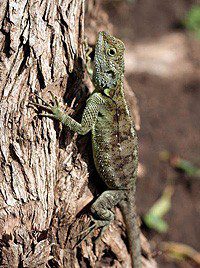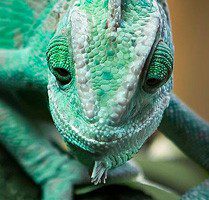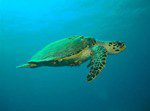
Enough
Bissa is a sea turtle that can be found in the waters of the Pacific, Indian and Atlantic oceans. It mainly inhabits coral reefs, bays with mangrove shores, lagoons and rocky shallow waters.
The size of an adult varies from 60 to 80 cm in length. The average weight varies from 40 to 60 kg. The tortoise shell is heart-shaped, the back of the shell is pointed and very narrowed. The upper jaw of this turtle protrudes above the lower jaw and is armed with a sharp tooth. The color of the shell is brown on top and has a spotted pattern of a yellowish tint.
The main diet of hawksbill is arthropods, mollusks and sea squirts. Although at the same time hawksbill can also eat algae.
During the breeding season, the hawksbill female independently digs a hole on the sandy shore, in which she lays about 150 eggs with a diameter of about 40 mm. The incubation period lasts about two months. At the nesting site, the hawksbill female comes once every three years.
Keep this turtle at home in large round pools of high quality sea water, which requires regular thorough filtration.
The meat of hawksbill is rarely eaten, as the turtle eats, including poisonous animals, because of which its meat can also become poisonous.
This species of turtle is endangered and is listed in the International Red Book. It is hunted because of the stratum corneum on the shell, from which various souvenirs are made.
Content
 Representatives of this family live in tropical, warm seas, therefore, to keep them in captivity, you will certainly need a large (a turtle will need a lot of space for swimming), preferably a round pool with high quality sea water. The water in the aquarium should be warm – temperature fluctuations are allowed in the range from 22 to 24 degrees.
Representatives of this family live in tropical, warm seas, therefore, to keep them in captivity, you will certainly need a large (a turtle will need a lot of space for swimming), preferably a round pool with high quality sea water. The water in the aquarium should be warm – temperature fluctuations are allowed in the range from 22 to 24 degrees.
All sea turtles, and Bissa is no exception, have extremely high metabolisms, so thorough water filtration will be required, sometimes it will even be necessary to replace some of the water in order to stabilize the pH level.
To avoid injury, the sides of the pool must be smooth. The silicone seams on the sides of the pool will need to be covered, as turtles can pull them out and eat them. Turtle waste and food remains should be regularly sucked out from the bottom of the aquarium.
For newly arrived individuals, quarantine is a mandatory precaution.
If you are diving into a pool of hawksbill, the most important rule to follow is not to touch the turtle. Bissa, being next to a person in the water, does not pay any attention to him – thus, she can be photographed almost point-blank. However, as soon as you touch it (and hawksbill is very sensitive to touch even to its shell), the turtle is frightened and abruptly goes up to the surface of the water to take a sip of air. Since sharp rises and dives to depth are contraindicated for a person, you can spoil the photo session by such actions.
It is also completely unacceptable to attempt to ride a hawse, grabbing the edges of her shell from behind. Bissa is a very strong tortoise, so she will be able to wriggle out of your hands in no time, and at the same time turn around sharply so that her strong beak-shaped jaws will be in close proximity to your fingers. Since such a neighborhood is unlikely to please you, be sure to take precautions.
Additionally
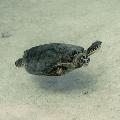 The hawksbill spends its entire life in the sea, on land it appears only during the breeding season.
The hawksbill spends its entire life in the sea, on land it appears only during the breeding season.
The meat of hawksbill is eaten, but it can be poisonous if the turtle has eaten poisonous animals. In many countries, their eggs are considered a delicacy.
This species is also exterminated because of the shell – it is used to make “tortoiseshell”. The horn shields that cover the shell of Byssa have long been used in various crafts. Souvenir products are made from young individuals, including stuffed animals. The stratum corneum that covers the hawksbill’s shell is called the “turtle” and is used for handicrafts. The horny substance is heated in hot water and merges into one mass in compressed layers. At the same time, these layers quite easily take the desired shape, keeping it even after cooling.
The most terrible moments of the extraction of the horny substance is that the stratum corneum is well separated from the shell only after heating. In this regard, most often a live turtle is hung over a fire until the plates do not fall behind.
This turtle is exterminated in those few moments when it appears on the surface – during breeding. And often this happens even before she has time to lay the masonry.
Due to the above reasons, the species is under the threat of extermination and is listed in the International Red Book, despite its rather extensive range. Although the bissa is protected by law, however, it is often ineffective. The protection of hawksbill is hampered by the strong fragmentation of its habitats and nesting, as well as the lack of sufficient information on the movement of populations. Among other things, hawksbill is very sensitive to disturbances in its nesting sites.
Bissa is included in the list of “10 species that may not be” compiled by the World Wildlife Fund. The main reason for this threat is the black market and poaching.
To preserve the species, an absolute ban on trade in hawksbill shells and stuffed juveniles is required. Tight control over the collection of eggs will not be superfluous at all.
Sources of
http://www.cultinfo.ru
http://www.cherepahi.ru
http://www.floranimal.ru
http://www.floranimal.ru
http://ru.wikipedia.org
Other names
Bissa, Real carriage, Marine;
Eretmochelys imbricata (lat.);
Atlantic Hawksbill sea Turtle (англ.).
Types
Eretmochelys imbricata scamata
Eretmochelys imbricata bissa (Pacific Hawksbill Turtle)
Eretmochelys imbricata imbricate
Inhabitation
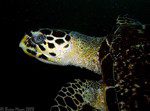 Bissa lives in almost all tropical seas. In the Atlantic, it is represented in territories from the northern states of the United States to southern Brazil. Bissa can be found off the coast of Great Britain and Nova Scotia. Often it is found in the latitudes of the Indian Ocean, including Madagascar and more eastern territories. As for the Pacific Ocean, in its eastern part it is distributed from the Gulf of California to Peru, while in the west it appears even in territories that come close to Japan.
Bissa lives in almost all tropical seas. In the Atlantic, it is represented in territories from the northern states of the United States to southern Brazil. Bissa can be found off the coast of Great Britain and Nova Scotia. Often it is found in the latitudes of the Indian Ocean, including Madagascar and more eastern territories. As for the Pacific Ocean, in its eastern part it is distributed from the Gulf of California to Peru, while in the west it appears even in territories that come close to Japan.
Most of all, hawksbill prefers to be located on rocky shallow waters, in bays and lagoons with mangrove shores, loves coral reefs. Basically, it can be found on shallow coastal waters, estuaries and branches of rivers with a sandy or muddy bottom. Most often lives where there is little underwater vegetation.
The ability of hawksbill to navigate perfectly in sea spaces and swim through vast territories is widely known, however, unfortunately, it has not been studied much yet.
Description
 Representatives of the family of sea turtles are reptiles of rather large size, with limbs that resemble oars in their shape. They rarely come ashore, doing so mainly to lay eggs. On land, these turtles are practically defenseless and can easily become the prey of catchers.
Representatives of the family of sea turtles are reptiles of rather large size, with limbs that resemble oars in their shape. They rarely come ashore, doing so mainly to lay eggs. On land, these turtles are practically defenseless and can easily become the prey of catchers.
Bissa is the second species from the family of sea turtles (there are 6 species in the family, including the green turtle).
This turtle can be easily distinguished from other species by the two pairs of scutes between the eyes.
Outwardly, hawksbill looks like a green turtle, but its body size is smaller than that of a green turtle – from 60 to 90 cm. Body weight ranges from 45 to 55 kg. She has a fairly light heart-shaped shell. The back of the shell is significantly narrowed and pointed. In young individuals, the armored shields noticeably overlap each other, however, with age, the overlap smoothes out and subsequently disappears completely. The tail does not protrude beyond the shell.
The upper jaw hangs over the lower and is equipped with a weapon – a sharp prong. The front legs-flippers serve as fins for this turtle, while the hind legs serve as a rudder. The front flippers usually have two claws.
The dorsal shield of hawksbill is chestnut or dark brown in color with a pinkish or yellow pattern of rays and spots. The ventral shield of the turtle is yellow.
Swimming under the thickness of the body of water, the hawksbill works only with its front paws, flippers, whose movements strongly resemble the flapping of the wings of birds. The ideal streamlined shape of the body of this turtle allows you to create minimal resistance in those moments when the turtle moves in the water.
Food
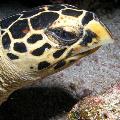 The hawksbill feeds on mollusks, arthropods, fish, ascidians, but does not shun seaweed. They look for food only in the sea.
The hawksbill feeds on mollusks, arthropods, fish, ascidians, but does not shun seaweed. They look for food only in the sea.
When kept in a terrarium, hawksbill can eat fish (except for herring and cod) and meat. However, if it is possible to exclude cod from the diet of a turtle in captivity, do it, because due to too soft meat, the water in the aquarium can become very polluted. The same goes for salad. But algae or spinach will come in handy.
When hunting tuna and other fish, hawksbill can become entangled in fishing nets. It is extremely rare for her to get out on her own, so cases of the death of this turtle in the nets are quite frequent.
Reproduction
 During these periods, the hawksbill female carries out sea migrations over remote distances. Permanent nesting beaches are not so numerous. The most famous of them is located on the Mediterranean coast in Turkey (west of Antalya), in Sri Lanka, on the Caribbean Sea off the coast of Chiriki Bay (Isthmus of Panama).
During these periods, the hawksbill female carries out sea migrations over remote distances. Permanent nesting beaches are not so numerous. The most famous of them is located on the Mediterranean coast in Turkey (west of Antalya), in Sri Lanka, on the Caribbean Sea off the coast of Chiriki Bay (Isthmus of Panama).
During the season, the female makes from 2 to 4 clutches on sandy low banks, which contain round eggs, 40 cm in diameter, from 70 to 180 eggs. The incubation period takes about 60 days. After hatching, the babies, driven by instincts, crawl towards the sea on their own.
The hawksbill female usually arrives at the nesting site once every three years.



